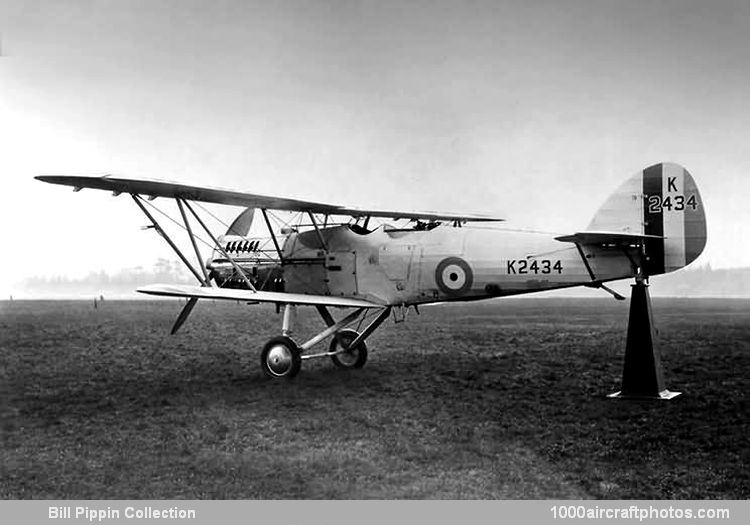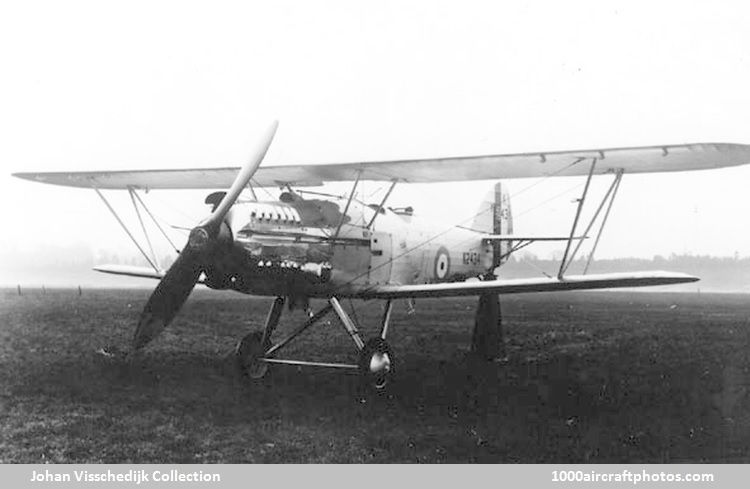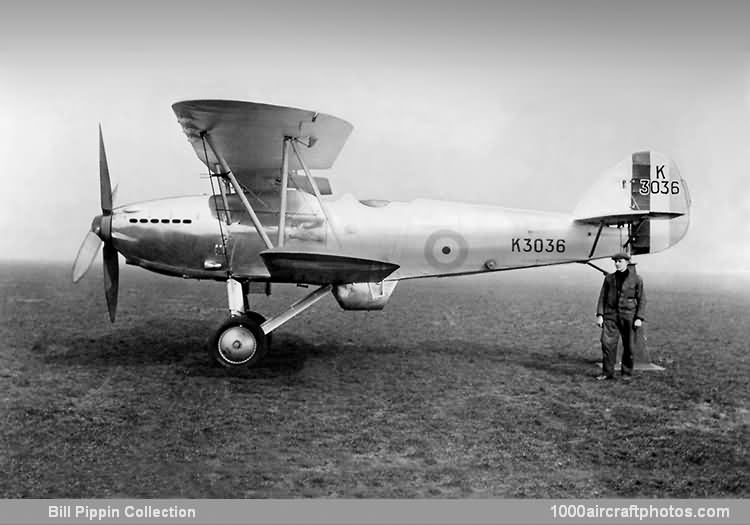08/31/2014. Remarks by
Johan Visschedijk: "More aircraft of the Hawker Hart origin were built between WW I and WW II than of any other basic design in Great Britain, and among all the pilots of Britain's RAF in 1939 there can have been very few who had not trained or served at least one tour on one or other of the many Hart variants. Furthermore it is unlikely that during the 1930s any British aircraft appeared with more different engine installations than the Hawker Hart, for, from 1930 onwards, these aircraft were employed both by the Hawker companies and the principal engine manufacturers as engine test beds, either to perform the specified flying hours required for certification or to develop the installations themselves.
First two of the trial Harts were G-ABMR, G-ABTN and the private venture Panther Hart. All manner of Rolls-Royce Kestrels were flown in G-ABMR, including the Kestrel XVI (Special), and with a modified version of this engine G-BMR still exists today, displayed at the RAF Museum at Hendon.
Hart Mk.I (K2434) (
Johan Visschedijk Collection)
The K2434 serialed Hart appeared in 1933 fitted with the Napier Dagger I 24-cylinder in-line H-engine (as shown above), being first flown on November 17. This power plant gave continuous trouble, excessive vibration causing periodic fatigue failures of mountings and cowlings. In January 1935 the Dagger II was introduced with little improvement, but within nine months the Dagger III had been installed and proved successful. K2434 was assessed at Martlesham with all three engines, and as a result of the success of the last engine the Specification which brought forth the Hawker Hector was prepared.
Hart Mk.I with Rolls-Royce P.V.12 engine (K3036) APS No. 3471
The Rolls-Royce P.V.12, which was to become the famous Merlin engine, was flown in Hart K3036 on February 21, 1935. Employing a ventral radiator bath similar to that on the Hurricane (the prototype of which was in its early stages of construction), this Hart was delivered to Rolls-Royce Ltd. in the following April and was fitted in turn with Merlin "C" and "E" engines, completing over 100 hours flying with each.
Hart K3012, having been used for installation certification of the Kestrel X during 1933, was delivered to Bristols for installation of the Pegasus radial. After trials with narrow-chord and
NACA broad-chord cowlings this machine was returned to Hawker at Brooklands, fitted with cockpit enclosure and despatched to Canada for cold weather trials, being equipped at one time with a ski landing gear.
Another Hart, K3020, was also used by Bristols with Pegasus and Mercury engines, in the latter instance performing the certification program for the Bristol Blenheim Mercury VIII installation during 1936. Later this aircraft served to test many components of the Perseus and Taurus installations for the Beaufort prototype, though it is believed that neither engine was flown on K3020.
Other engines test flown on Harts included the Lorraine Petrel and Hispano-Suiza 12 X in-line engines, the former in preparation for a proposed Yugoslav Fury installation and the latter for initial certification of the Spanish Hawker Osprey power plant.
The following engines were tested on the trials aircraft, those with an asterisk were engines used on series aircraft."


